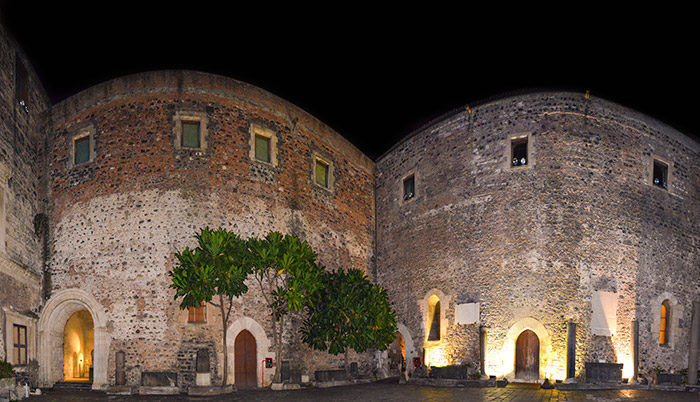Civic Museum of the Ursino Castle
The reopening of the first floor of the museum (which took place in 1999) allows you to admire part of the sculptures from the Hellenistic and Roman period, among which the head of an ephebe from the sixth century BC, found in the excavations of ancient Leontinoi and belonged to Ignazio Paternò Castello (yes believes that it originally belonged to the accephalus Kouros exhibited at the Paolo Orsi Museum in Syracuse), the 1rd century statue of Hercules from the excavations of the Zappalà palace in via A. di Sangiuliano in Catania, the monumental torso of emperor Julius-Claudius depicted as Jupiter. In addition, many decorative fragments from the Theater and valuable floor mosaics from different parts of the city (an inviting “Vtere Feliciter” stands out above the others, a wish that served as the entrance to the nymphaeum of Piazza Dante). Also of considerable importance (especially for Sicilian historiography of the imperial age and for public functions) the monumental cippus of Q. Atilius, called cippus Carcaci [2] and the fragment of decoration (given its appearance, it probably originally had to be part of a historiated column) coming from the excavations at the Porta delli Canali (today Porta di Carlo V) [2009], both found in Catania. Noteworthy are the two portals from the XNUMXth and XNUMXth centuries respectively. The latter located in the courtyard is an important document from the period in which the Castle was the seat of a prison, with the writings (signatures, poems, drawings) engraved by the condemned on the jambs. There is also a remarkable numismatic collection rich in precious Greek and Roman coins, which however has not yet been set up (March XNUMX). Finally, a rich collection of Greek craters among which an Attic crater with drawings of Perseus decapitating the Gorgon stands out.
Card insertion: Ignatius Caloggero
Photo: web
Information contributions: Ignazio Caloggero, Web
Note: The populating of the files of the Heritage database proceeds in incremental phases: cataloging, georeferencing, insertion of information and images. The cultural property in question has been cataloged, georeferenced and the first information entered. In order to enrich the information content, further contributions are welcome, if you wish you can contribute through our area "Your Contributions"



